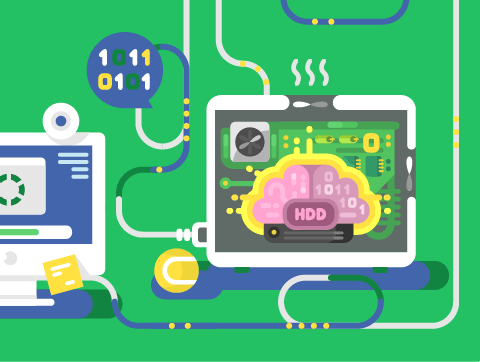Introduction
We’ve seen that there are several types of user interfaces, and we use them for different reasons and different devices. But how do we choose which user interface would be correct for a certain situation?
Imagine you were designing an affordable tablet aimed at very young children. What user interface would you use? How would you go about making that decision?
In this lesson, we’ll learn about the factors affecting the choice of user interface, including:
- Ease of use, user experience & accessibility
- Performance/response time, user requirements & storage space

Ease of Use
This is about how simple and intuitive the user interface is to navigate and perform tasks on.
It’s important to choose a user interface that is easy to use, as a difficult user interface will reduce productivity and increase training costs (as you’ll need to spend more time teaching employees to use the interface).
The ease of use of a user interface depends on the type of task being performed and what device is being used.
For example, a graphical user interface would be easy to use on a desktop computer but very difficult to use on a washing machine.

User Experience
Ease of use can also be relative to your users’ experience.
We’ve learned previously that a technical IT user might find a text-based interface easy to use. However, most of us would find it very difficult because we have never used that type of interface before.
The user interface we have the most experience with will be easier for us to use, and we will be more productive on. This is true even within the same type of user interface.
For example, Windows 10 and MAC OS both have a graphical user interface.
However, if you’ve only used Windows 10 but are then given a MAC to use, you’d find the interface very difficult initially, as the two interfaces, while both GUIs, are actually quite different.

Accessibility
Another factor that affects how easy a user interface is to use is how well the interface is designed for people with individual needs.
Not all user interfaces are equally easy to use for people with disabilities.
For example, a speech interface can be accessible for someone with a visual disability as it doesn’t rely on sight at all. However, graphical user interfaces can be poor for someone with a visual disability as they naturally rely on vision a lot.
Some graphical user interfaces provide built-in accessibility tools to mitigate this, such as a screen magnifier and text-to-speech software.
They are also often highly adaptable, including high-contrast colour schemes and the ability to change the size of icons, menus, and pointers. However, some GUIs are better at this than others.

Performance/Response Time
This is about how quickly tasks can be completed by using the user interface as well as how quickly the interface responds to user input.
We’ve already learnt that a text-based interface can be very quick to use if you know the command words.
This is because many actions can be performed in a single command that would require navigating through several windows in a GUI.
In addition, as text-based interfaces take less processing power than a GUI, this frees up more processing power for performing tasks, which could give faster response times.

Performance/Response Time
Some interfaces have particularly slow response times. An example is a speech interface.
Interpreting human speech is processor intensive and takes a long time to interpret.
In fact, many speech interfaces will record your voice, send it over the internet to powerful servers, process the voice to figure out the command, and then send the result. This leads to slow response times.

User Requirements
This is about whether the user interface has the required functionality for the purpose for which you will be using it.
Does it have the features you require, and can it be relied upon to perform the tasks you wish to complete?
If we’re developing a controlling device, such as a security light system, then we would need a sensor interface, as this is the type of interface that will constantly monitor sensors and automatically perform actions in response.
However, if we’re looking for a user interface to allow us to browse the internet, send emails and write reports on a desktop computer, only a graphical user interface would have the functionality available to allow us to do this.

Storage Space
Some user interfaces require more storage than others to run. However, not all computing devices have a large amount of storage.
While most desktops, laptops, tablets, and smartphones will have a significant amount of storage, embedded systems and domestic appliances probably will not.
We’ve learnt that graphical user interfaces require a large amount of storage space to store all of the graphics they use.
This is fine for computers, most handheld devices, and entertainment systems, as they all typically have a lot of storage space.
But it would be a problem for a dishwasher, central heating system, and vending machine.

Storage Space
Another type of interface that might require a lot of storage is a speech interface, as it will need to store a recording of your voice to process your commands and figure out what you’re saying.
Voice recordings take up a lot of storage.
However, as we’ve learnt earlier, these are often transferred to remote servers for processing so devices with speech interfaces don’t necessarily require a lot of storage.

Lesson Summary
Ease of use is about how simple and intuitive the user interface is to navigate and perform tasks.
User experience is about whether the users have previously used the interface or similar interfaces.
Accessibility is about whether the interface supports users with individual needs.
Performance/response time is the speed by which the interface can complete a task.
User requirements concern whether the user interface has the required functionality for the purpose for which it will be used.
Storage space is about the available permanent storage that the user interface requires to run.
